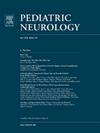卡纳万病儿童远程运动评估的可行性、可接受性和可靠性。
IF 3.2
3区 医学
Q2 CLINICAL NEUROLOGY
引用次数: 0
摘要
背景:分散的临床试验有许多优点,包括减轻旅行负担、改善获取和降低成本。然而,在罕见儿科疾病的远程运动评估方案的制定和实施方面的知识有限。本研究描述了一种严格的方法,从面对面过渡到远程运动评估儿童与卡纳万病。方法:7例Canavan病患儿(平均年龄2.5岁;sd = 1.0)及其护理人员在两阶段的研究中完成了四次远程访问。临床评分员接受培训,指导护理人员使用远程管理协议的关键运动评估工具。评估大运动功能量表-88、Hammersmith婴儿神经系统检查运动里程碑第2部分、Alberta婴儿运动量表和婴儿运动概况远程管理的可行性、可接受性和可靠性。结果:在第一阶段,远程评估是可行的,完成了95%(64个中的61个)的运动评估。护理人员的可接受性很高,86%的护理人员(n = 95 / 111)支持远程管理协议。在第2阶段,在20次最终访视评估中,有15次的评分者间信度(类内相关系数或Fleiss kappa >0.75)为良好至优秀。在访视3和4的20对评估中,有18对的内部信度为良好至优秀。结论:本研究强调了一个严格的多阶段方法的价值和重要性,以制定和实施儿科罕见疾病研究的远程运动评估方案。本研究结果支持Canavan病患儿远程运动评估的可行性、可接受性和可靠性。本文章由计算机程序翻译,如有差异,请以英文原文为准。
Feasibility, Acceptability, and Reliability of Remote Motor Assessment in Children With Canavan Disease
Background
Decentralized clinical trials have many advantages including reducing travel burden, improving access, and reducing costs. However, there is limited knowledge to inform the development and implementation of remote motor assessment protocols in rare pediatric diseases. This study describes a rigorous method for transitioning from in-person to remote motor assessment of children with Canavan disease.
Methods
Seven children with Canavan disease (mean age 2.5 years; S.D. = 1.0) and their caregivers completed four remote visits during a two-phase study. Clinical raters were trained to coach caregivers using remote administration protocols for key motor assessment tools. The feasibility, acceptability, and reliability of remote administration of the Gross Motor Function Measure-88, Hammersmith Infant Neurologic Exam Motor Milestones Part-2, Alberta Infant Motor Scale, and Infant Motor Profile were evaluated.
Results
In phase 1, remote assessment was feasible, with 95% (61 of 64) of motor assessments completed. Caregiver acceptability was high, with 86% of caregiver responses (n = 95 of 111) supporting the remote administration protocol. In phase 2, inter-rater reliability (intraclass correlation coefficient or Fleiss kappa >0.75) was good to excellent in 15 of 20 final visit assessments. Intra-rater reliability was good to excellent in 18 of 20 pairs of assessments by visits 3 and 4.
Conclusions
This study highlights the value and importance of a rigorous multiphased approach to the development and implementation of remote motor assessment protocols for pediatric rare disease studies. Findings from this study support the feasibility, acceptability, and reliability of remote motor assessment in children with Canavan disease.
求助全文
通过发布文献求助,成功后即可免费获取论文全文。
去求助
来源期刊

Pediatric neurology
医学-临床神经学
CiteScore
4.80
自引率
2.60%
发文量
176
审稿时长
78 days
期刊介绍:
Pediatric Neurology publishes timely peer-reviewed clinical and research articles covering all aspects of the developing nervous system.
Pediatric Neurology features up-to-the-minute publication of the latest advances in the diagnosis, management, and treatment of pediatric neurologic disorders. The journal''s editor, E. Steve Roach, in conjunction with the team of Associate Editors, heads an internationally recognized editorial board, ensuring the most authoritative and extensive coverage of the field. Among the topics covered are: epilepsy, mitochondrial diseases, congenital malformations, chromosomopathies, peripheral neuropathies, perinatal and childhood stroke, cerebral palsy, as well as other diseases affecting the developing nervous system.
 求助内容:
求助内容: 应助结果提醒方式:
应助结果提醒方式:


